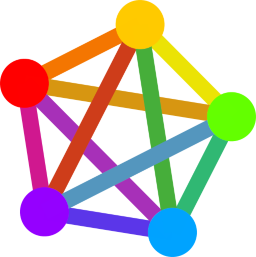As part of our efforts to make science more reproducible, we integrate Bio-protocol in our methods sections so you can easily view or request detailed protocols directly from any eLife article. #Reproducibility #OpenScience
As part of our efforts to make science more reproducible, we integrate Bio-protocol in our methods sections so you can easily view or request detailed protocols directly from any eLife article. #Reproducibility #OpenScience
Better late than never! 
I've just started using Mastodon and joined the excellent 🧪🧬 fediscience.org community.
I am looking forward to sharing my journey with all the Fedizens as a research student and enthusiast, as well as connect with the people from around the globe.
My Mastodon handle @pro
Better late than never! 
I've just started using Mastodon and joined the excellent 🧪🧬 fediscience.org community.
I am looking forward to sharing my journey with all the Fedizens as a research student and enthusiast, as well as connect with the people from around the globe.
My Mastodon handle @pro
The thickness of #Arctic sea ice dropped to a new all-time record low this year around the North Pole (data from PIOMAS). More in my latest 'climate viz of the month' blog: https://zacklabe.com/climate-viz-of-the-month/ #OpenScience #SciComm #DataViz #OpenData
The thickness of #Arctic sea ice dropped to a new all-time record low this year around the North Pole (data from PIOMAS). More in my latest 'climate viz of the month' blog: https://zacklabe.com/climate-viz-of-the-month/ #OpenScience #SciComm #DataViz #OpenData
🌍 For African researchers looking to transition into #OpenScience, the African Reproducibility Network offers training, workshops and community, led by the brilliant Emmanuel Boakye.
Find out more 👇
https://africanrn.org
🔔 UNSC Corpus Update 2025 🔔
The Corpus of Resolutions: UN Security Council (CR-UNSC) now contains all UNSC resolutions up to and including resolution 2798! The new version also includes some improvements and a large number of bug fixes.
✅ UN Security Council resolutions 1 through 2798
✅ 82 Variables
✅ Drafts and Meeting Records
✅ Bibliographic Database
✅ UNSC and UNGA Citation Data
✅ Languages: English, French, Spanish, Chinese, Arabic, Russian
✅ Formats: CSV, Parquet, PDF, TXT, GraphML, BIBTEX
✅ #OpenAccess
✅ #PublicDomain
🔶 DOWNLOAD DATASET 🔶
💾 Download Corpus: https://doi.org/10.5281/zenodo.7319780
📒 Documentation: https://zenodo.org/records/15154519/files/CR-UNSC_2025-12-22_Codebook.pdf?download=1
See this blog post introducing the dataset for an overview: https://seanfobbe.com/posts/2024-05-06_new-dataset-corpus-of-resolutions-un-security-council/
We also recently published a pre-print entitled "Words of Power: Introducing a Comprehensive Corpus of UN Security Council Resolutions" (Zenodo 2025) describing the collection, revision and full creation process of the corpus: https://zenodo.org/records/15191558/files/Fobbe-Gasbarri-Ridi_2025_Words-of-Power-Introducing-UN-Security-Council-Resolutions-Corpus.pdf?download=1
#United Nations #UN #UNSecurityCouncil #InternationalLaw #Law #RStats #OpenAccess #OpenSource #OpenScience @politicalscience @rstats
[New Dataset] The Corpus of Resolutions: UN Security Council
Happy to announce that our #JOSS paper on #MotilA is now published 😊
MotilA is an #OpenSource #Python pipeline for quantifying microglial fine-process motility in 3D/4D in vivo multiphoton #imaging data. It is specifically designed for reproducible, batch-scale analysis.
The paper describes the methodology, implementation, and scope of the software:
📄 https://doi.org/10.21105/joss.09267
💻 https://github.com/FabrizioMusacchio/MotilA
📘 https://motila.readthedocs.io/
MotilA – A Python pipeline for the analysis of microglial fine process motility in 3D time-lapse multiphoton microscopy data
🔔 UNSC Corpus Update 2025 🔔
The Corpus of Resolutions: UN Security Council (CR-UNSC) now contains all UNSC resolutions up to and including resolution 2798! The new version also includes some improvements and a large number of bug fixes.
✅ UN Security Council resolutions 1 through 2798
✅ 82 Variables
✅ Drafts and Meeting Records
✅ Bibliographic Database
✅ UNSC and UNGA Citation Data
✅ Languages: English, French, Spanish, Chinese, Arabic, Russian
✅ Formats: CSV, Parquet, PDF, TXT, GraphML, BIBTEX
✅ #OpenAccess
✅ #PublicDomain
🔶 DOWNLOAD DATASET 🔶
💾 Download Corpus: https://doi.org/10.5281/zenodo.7319780
📒 Documentation: https://zenodo.org/records/15154519/files/CR-UNSC_2025-12-22_Codebook.pdf?download=1
See this blog post introducing the dataset for an overview: https://seanfobbe.com/posts/2024-05-06_new-dataset-corpus-of-resolutions-un-security-council/
We also recently published a pre-print entitled "Words of Power: Introducing a Comprehensive Corpus of UN Security Council Resolutions" (Zenodo 2025) describing the collection, revision and full creation process of the corpus: https://zenodo.org/records/15191558/files/Fobbe-Gasbarri-Ridi_2025_Words-of-Power-Introducing-UN-Security-Council-Resolutions-Corpus.pdf?download=1
#United Nations #UN #UNSecurityCouncil #InternationalLaw #Law #RStats #OpenAccess #OpenSource #OpenScience @politicalscience @rstats
[New Dataset] The Corpus of Resolutions: UN Security Council
Update. #SocArXiv (@socarxiv) is dealing with a similar problem by requiring submitters to have #ORCIDs and tightening its focus on the social sciences.
https://socopen.org/2025/11/19/socarxiv-submission-rule-changes/
Update. Here's another piece arguing that the best solution to this problem is to curb #OpenAccess itself.
https://journals.plos.org/plosmedicine/article?id=10.1371/journal.pmed.1004851
"The very measures designed to fight fraud (open access) simultaneously power new forms of problematic activities (GenAI-assisted fast churn science). Robust evidence is emerging that open access datasets, especially in health and medicine, are being exploited in this way by paper mills and other bad actors…We suggest that unrestricted open access will continue to compromise trust in research using exploited assets…[Our recommended] safeguards would not be incompatible with #OpenScience, but would protect open practices and maintain the ethical and scientific benefits; without such changes to reassert the balance between Open Science and research integrity, our expectation is that the credibility of research based on open access data sources will continue to decline."
Join folks from Translate Science at our upcoming January 2026 workshop at Charleston Conference Asia (we're Course 4). It's hybrid, so you can attend 100% online, or join Professor Lynne Bowker @lynnebowker on site in Bangkok, Thailand.
https://charlestonconference.regfox.com/cc-asia-2026
Please help us spread the word to others interested in multilingual #openScience !
Read about our previous iteration of this #FORCE11 Scholarly Communication Institute (FSCI) workshop on the Translate Science blog: https://transci.hypotheses.org
Join folks from Translate Science at our upcoming January 2026 workshop at Charleston Conference Asia (we're Course 4). It's hybrid, so you can attend 100% online, or join Professor Lynne Bowker @lynnebowker on site in Bangkok, Thailand.
https://charlestonconference.regfox.com/cc-asia-2026
Please help us spread the word to others interested in multilingual #openScience !
Read about our previous iteration of this #FORCE11 Scholarly Communication Institute (FSCI) workshop on the Translate Science blog: https://transci.hypotheses.org
🌍 For African researchers looking to transition into #OpenScience, the African Reproducibility Network offers training, workshops and community, led by the brilliant Emmanuel Boakye.
Find out more 👇
https://africanrn.org
#Arctic climate rankings are in for November 2025: https://zacklabe.com/archive-2025/. A historic boreal fall for sea ice conditions (and not in a good way).
The research org CNRS will end access to the Web of Science, shifting towards qualitative research assessment and open tools. It’s a strong move for #OpenScience, reducing reliance on proprietary metrics and supporting fairer, more transparent evaluation.
https://www.cnrs.fr/en/update/cnrs-breaking-free-web-science
My #Arctic temperature graphics have been updated for November 2025 (ranked in top 5 warmest). New records were reached in my individual Pacific Arctic and Greenland Arctic regional sectors.
➡️ Check it out: https://zacklabe.com/arctic-temperatures/. #DataViz #SciComm #OpenScience #OpenData
Join us TODAY 16:00-17:30 CET for a special hybrid ReproducibiliTea in the HumaniTeas session on research integrity and #reproducibility in the age of #GenAI with guest speaker @dingemansemark. The recommended (but optional!) preparatory reading is: https://osf.io/preprints/osf/2c48n_v1.
Join us at @unibibkoeln (room 4.06) for a selection of tea and Christmas sweets or DM me for the Zoom link.


#Arctic climate rankings are in for November 2025: https://zacklabe.com/archive-2025/. A historic boreal fall for sea ice conditions (and not in a good way).





